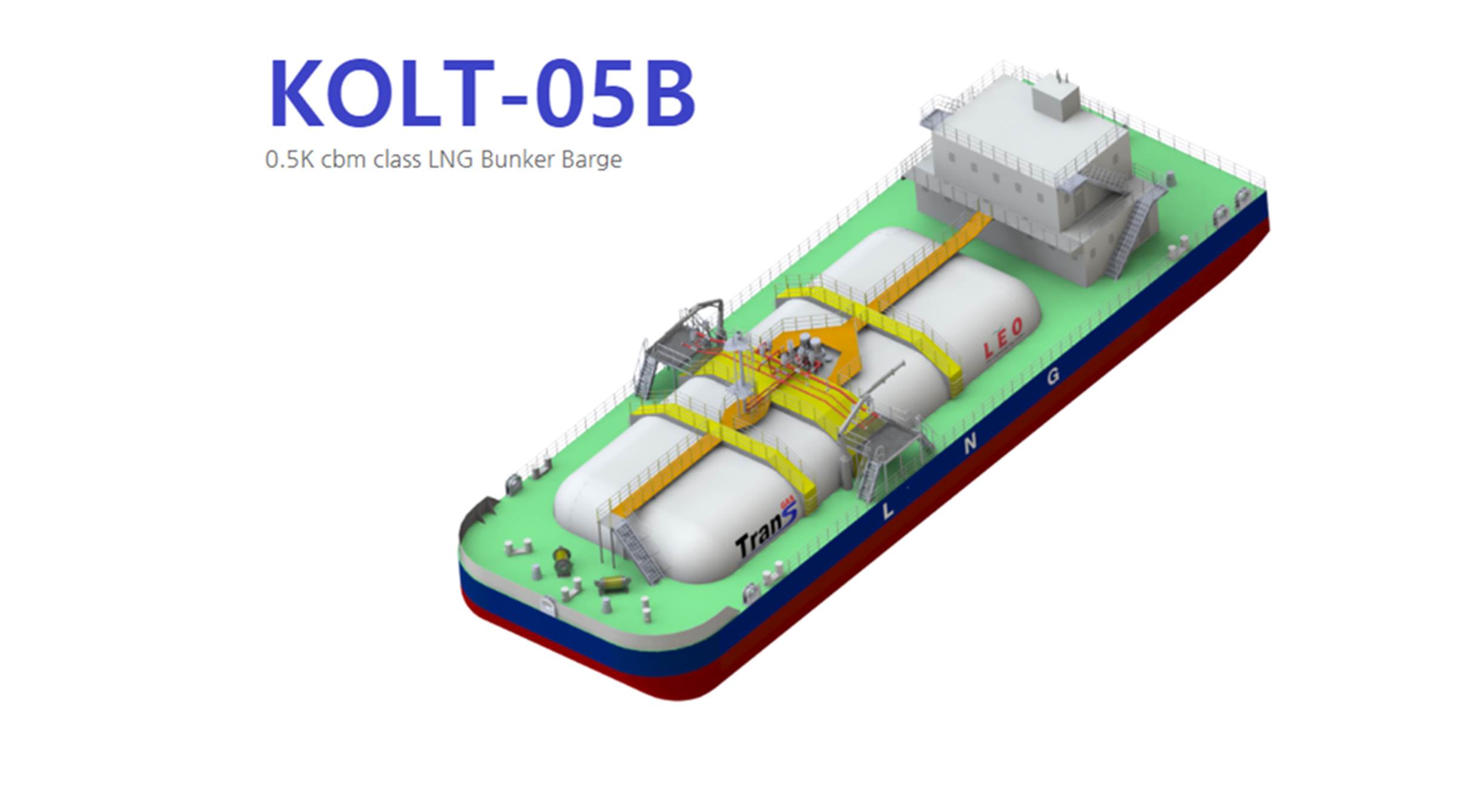
Trans Gas Solution, a leading company in the Korean LNG market, has been given the go-ahead by the Korean maritime authority for the development of the KOLT-05B model.
The designed unit is a 48.5 m vessel with an IMO Type C pressurised fuel tank with a storage capacity of 500 m3 which includes a low-pressure LNG fuel gas supply system CryoPac-L. The barge will have a bunkering arm to assist in fuelling vessels at a flowrate of 200 m3/h, and the ability to handle return gases during bunkering operations. The latter, in particular, will allow the vessel to comply with the lastest IMO emission regulations regarding sulphur dioxide, nitrogen oxide and carbon dioxide emissions.
The latest trends and future scenarios of LNG bunkering for ships will be addressed at the fifth International Conference on Small Scale LNG within “The Small Scale LNG Use, Euro-Mediterranean Conference&Expo” which will be held in Naples next 15/16 May. LNG market is already indicating a specialization for bunker vessels capable of supplying with ease the ferry boats, which require hundreds of cubic meters of LNG, compared to those for cruises and container ships that require thousands of cubic meters at each refueling.
The Trans Gas Solution project has been developed with the support of the Ministry of Oceans and Fisheries of South Korea in close collaboration with the Korean Research Institute of Ships & Ocean Engineering (KRISO). The project design is the result of a collaboration of a longstanding shipbuilding realities such as POSCO, EK Heavy Industries, Mytec and Valmax. In this context, Trans Gas Solution is in charge of the development of the control system including the Cargo Handling System of the vessel.
The development of the KOLT-05B is a pillar in the realisation of a Coastal Ship with Customised LNG Bunkering System which enables the Korean docking facilities to meet the increasing demand of these technologies at a national level and in the whole south eastern Asia.
The LNG bunkering barge system is expected to be realised within the first half of 2012 and, after being tested and commissioned, to operate LNG supply off the coast of Korea starting from 2022.
Source: LNG World Shipping
 EN
EN  it
it

